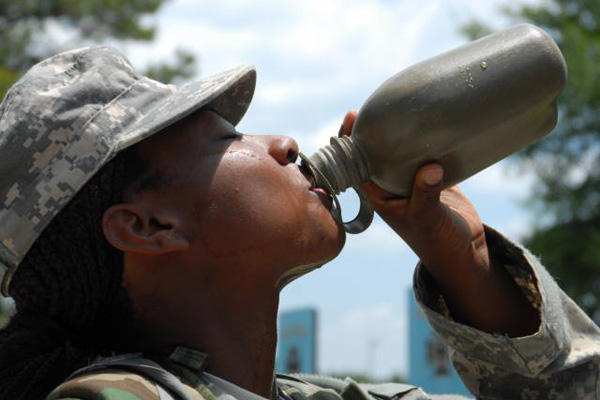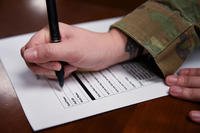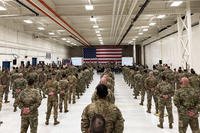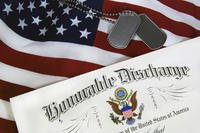Here in the South Carolina Lowcountry, we see many heat injuries during the summer months, particularly in the acute care area (ACA) at the Branch Health Clinic (BHC) at Marine Corps Recruit Depot (MCRD) Parris Island where boot camp and soaring temperatures often collide.
During the summer months, not only do temperatures rise, but the number of recruits nearly doubles as students graduate high school. As the department head, it’s my job to make sure we’re ready and my staff is fully prepared to manage any heat casualties when they’re brought to the ACA and that we make sure that recruits and active duty service members alike know what they can do to prevent heat injuries.
A heat injury is caused by hyperthermia, which is abnormally high body temperature. This can be due to extreme environmental temperatures, high humidity, medications and excessive physical work or exercise, several of which are found here at Parris Island. In extreme cases, hyperthermia can lead to heat stroke or death.
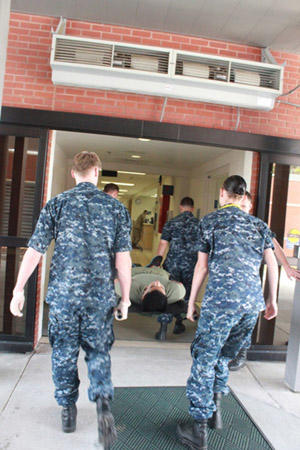
On Parris Island, recruits are most susceptible to heat injuries during forming days at the beginning of training before they’ve acclimated to the area and at the end of training during an extremely physical event that is known as the Crucible. During this three-day event, recruits are physically challenged with marching, obstacle courses, martial arts events and several other physically exerting activities.
Data collected by our preventive medicine department revealed most heat related injuries at Parris Island was in the form of heat exhaustion followed by rhabdomyolysis, a condition caused by overexertion and breakdown of the body’s muscles, and hyponatremia, which occurs when the body’s sodium level, depletes. By understanding heat injuries better, over the past year, we’ve seen a significant reduction in heat injuries: in 2011, there were 415 heat cases compared to 224 in 2012. This 46% reduction was influenced by implementing changes to recruit training, many of which anyone can incorporate into their lives to reduce the risk of heat injuries.
Here are some tips so you do not become a heat casualty:
• Hydrate. In hot, humid conditions large amounts of sweat is lost, which can disturb sodium and water balance in the body. Sodium, an electrolyte, affects the amount of water in your body, the acidity of your blood, your muscle function, and other important processes. Without sodium, our bodies don’t absorb enough water, and with too much of it we feel dehydrated. To prevent dehydration, the average person must drink plenty of water before, while, and after they are active. Do not drink coffee, colas, or other drinks that contain caffeine as it increases urine output and makes you dehydrate faster.
• Increase your sodium intake through your diet. At Parris Island, an extra meal-ready-to-eat (MRE) is added during the Crucible to help increase sodium intake. The foods in an MRE have added minerals and electrolytes, like sodium, which prevent dehydration. Recruits are also given fruit and sports beverages during the Crucible to improve electrolyte balance, something anyone can do to help stay well hydrated. (Taking salt tablets is not a good idea. Most people can get plenty of salt in their diets and by drinking sports beverages to replace minerals lost through sweating.)
• Modify your activity level. Excessive sweating from situations in which you overexert yourself or become overheated – especially if you do not compensate for fluid and electrolyte loss – leads to dehydration. When temperatures soar, heavy exercise outdoors can be dangerous.
• Avoid high-protein diets. If you are on a high-protein diet, which can lead to
dehydration, make sure that you drink at least 8 to 12 glasses of water each day.
• Avoid alcohol, including beer and wine. They not only increase dehydration but also make it hard to make good decisions such as modifying your activity or getting out of the heat.
• Stop working outdoors or exercising if you feel dizzy, lightheaded, or very tired.
• Layer. Wear one layer of lightweight, light-colored clothing when you are working or exercising outdoors. Change into dry clothing as soon as you can if your clothes get soaked with sweat.
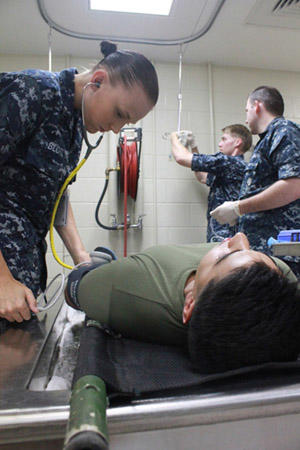
Additionally, knowing when to seek medical attention is important. We make sure that our sailors and Marines know that if they are experiencing dark-colored urine (a sign of dehydration), dizziness, fainting, fatigue, headache, muscle cramps, nausea, pale skin, profuse sweating, or rapid heartbeat to make sure and seek medical attention immediately.
Sometimes, despite our best efforts, we do receive heat injury cases that require intervention in the ACA. These patients are taken into our cool room, which is equipped with ice baths, intravenous fluids, and trained personnel who are fully prepared to treat heat injury cases. But, thanks to our preventive medicine department and branch health services working closely with the Crucible staff and Marine leadership to ensure that everyone receives proper education on preventing heat injuries, we have dramatically reduced the number of heat injury cases. By implementing the same techniques and tips that we use here at Parris Island, you can make sure that you don’t become a casualty of the heat either.
